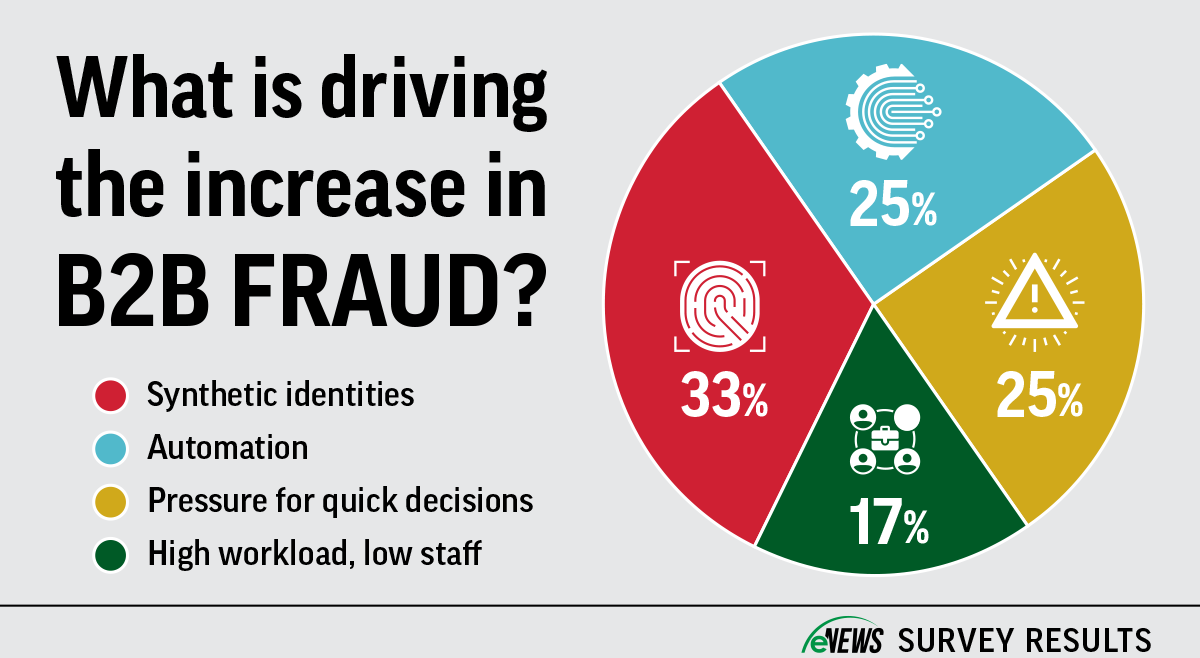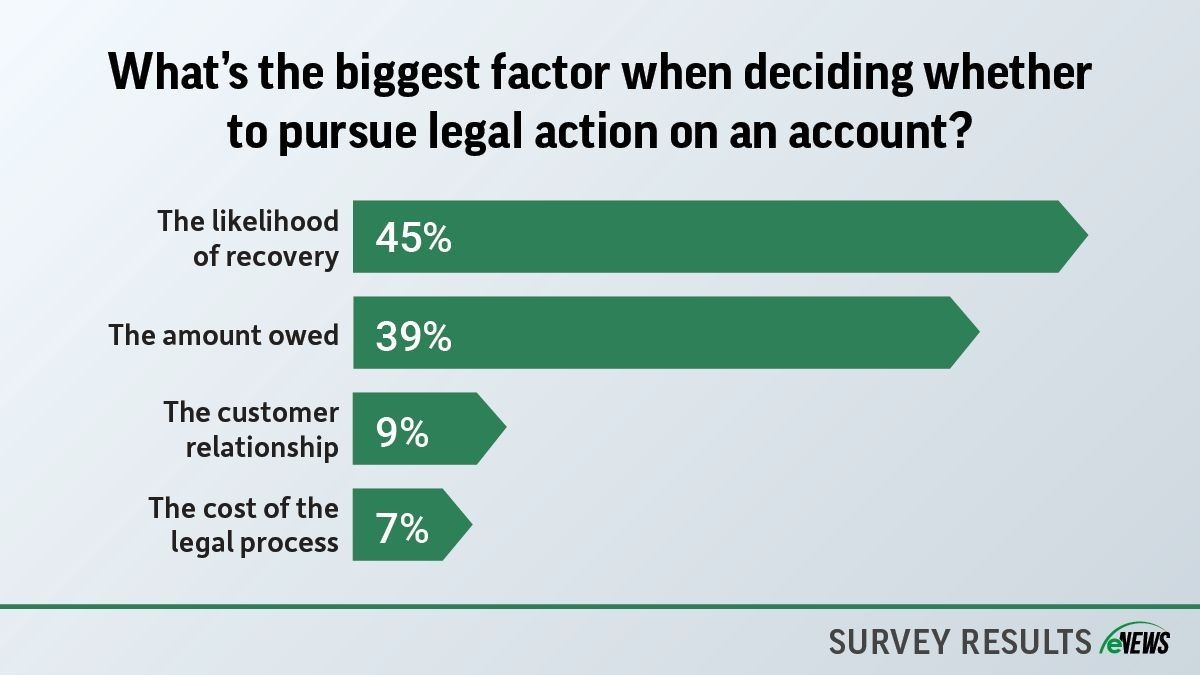eNews
Readying your defenses against synthetic fraud

As technology continuously reshapes the business-to-business credit field, the risk landscape transforms as fraudsters manipulate newer technology to attack businesses. With artificial intelligence becoming more advanced, credit managers are raising their defenses against synthetic fraud as it takes on new forms each day.
Why it matters: Synthetic fraud is when fabricated credentials are used to mimic a person or business, employing a combination of AI-generated images, spoofed phone calls and falsified business information. Credit requests may come from seemingly legitimate businesses, but taking extra time to verify the details, from the phone number to business address, can reveal the AI-powered fraud beneath the surface.
By the numbers: According to an eNews poll, 33% of credit managers find that synthetic identities are the biggest factor driving fraud, followed by automation (25%), pressure for quick decisions (25%) and high workload with limited staff (17%).
The AI boom introduced easier ways to do business. Unfortunately, it also created more avenues for fraudsters looking to take advantage of new technology. “We have seen an uptick in the past couple of years with fraudsters attempting to apply for terms,” said Alaina Worden, CCE, credit and collections manager at CECO (Portland, OR). “It typically appears as manipulated or manufactured identities, so either slightly altered real identities or entirely fabricated ones using stolen social security numbers (SSNs) and fake personal details.”
Verification has long been a hallmark of a credit investigation, whether that means giving the business a call or visiting their business address. With synthetic fraud on the rise, credit investigations may need to become more intensive as fraudsters may use legitimate business names and employee names to gain the trust of salespeople.
“Synthetic fraud is a blend of real and fake information, so our organization focuses on a multi-layered verification that includes SSN verification, along with banking and credit reference verification,” said Matt Miller, CBA, area credit manager for Builders FirstSource (Overland Park, KS). “The initial scrub of the business and SSN would identify immediate irregularities from Dun & Bradstreet, Moody’s, or the major credit reporting agencies. From there, we perform our identity and business verification through SSN and Employer Identification Number (EIN) validation, Secretary of State or Business Registry information to check any filings against the claimed business names and confirm business addresses.”
Synthetic fraud can be daunting, especially because as artificial intelligence improves it can be hard to determine what is real and what is artificially generated. Many of the red flags credit managers are accustomed to looking out for apply to synthetic fraud as well. As a credit manager, you likely have a sense of the kind of unusual customer behavior that hints at fraud.
“The main ‘red flags’ would be inconsistencies with rebuttals, odd push-back to simple requests or a heightened sense of urgency to process the application,” Miller said. “With regards to rebuttals, it can be a change in tone or behavior when further verification is requested about the job, order or business. With regards to odd push-back, it’s requests to come by their office building, contract banking references or advise us not to perform a standard credit underwriting operation.”
In response to the increase of synthetic fraud, Joe Lange, CCE, ICCE, CCRA, senior credit manager at Brenntag North America (Wauwatosa, WI) created a checklist for salespeople to complete with each new customer, including a customer visit. “Salespeople must call the phone number listed on the credit report, not the application,” Lange said. “And if they’ve been talking to a specific person in that business, they should call the company number and confirm that the person is an employee.”
Identifying synthetic fraud is not easy, but it helps to take the time to thoroughly review each new credit application. “In the credit world, we are constantly pressed to make that quick credit decision to set up the new customer and get the order released,” Lange said. “Don’t allow that pressure to make you to miss something.”
The bottom line: To ready your defenses against the rising threat of synthetic fraud, review your fraud detection practices and consider if they are strong enough to withstand more advanced, AI-powered fraud. Creating a checklist that you review for each new order with clear requirements can help easily root out fraudsters.





